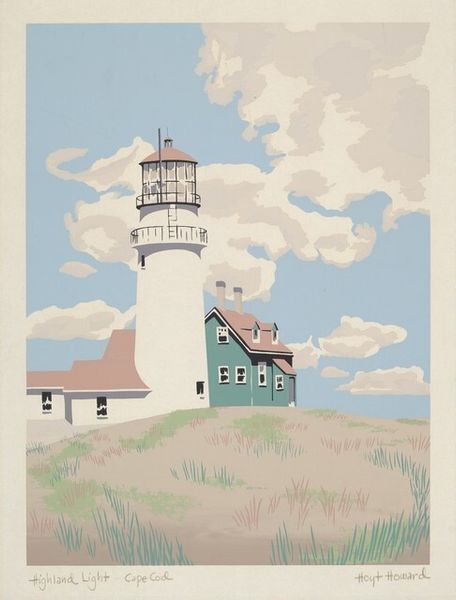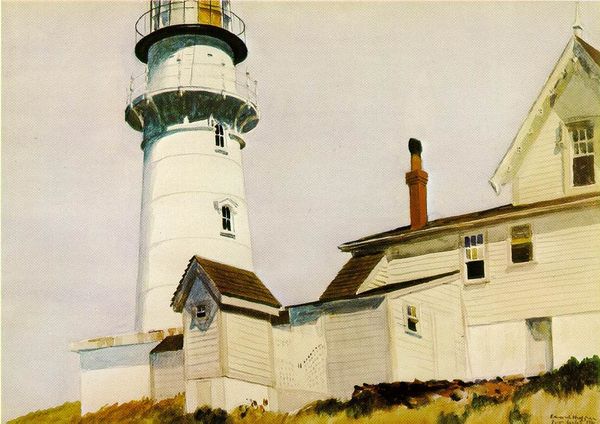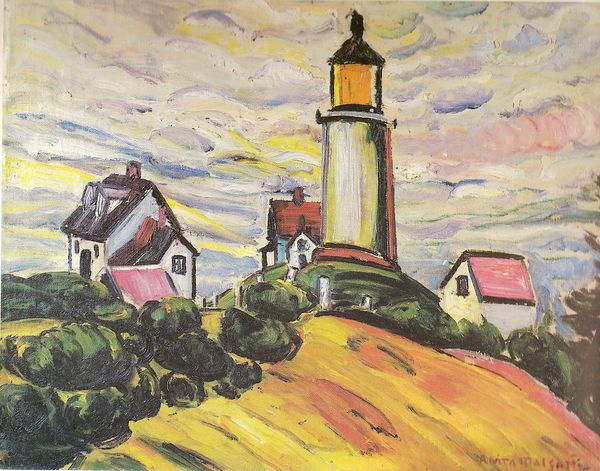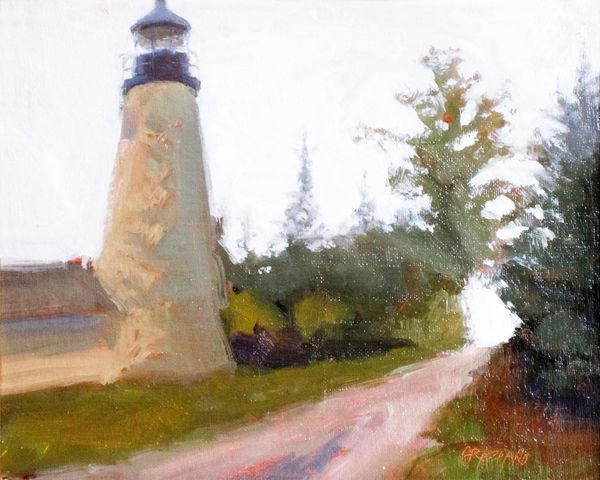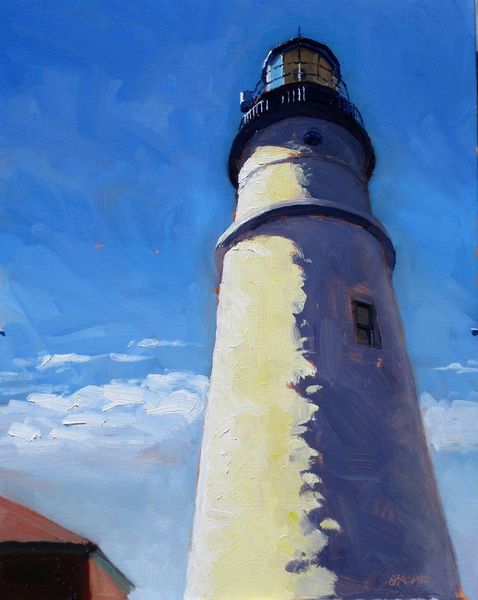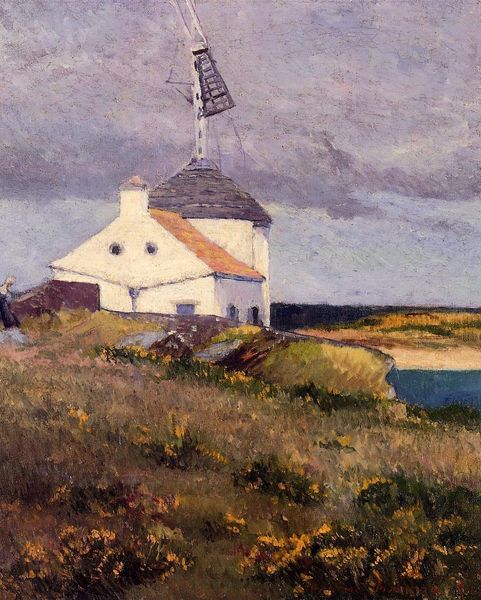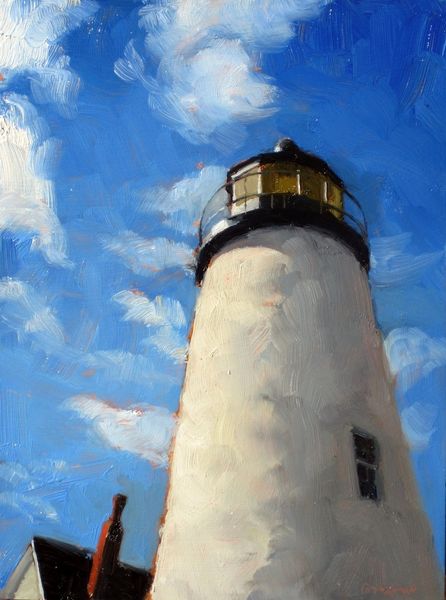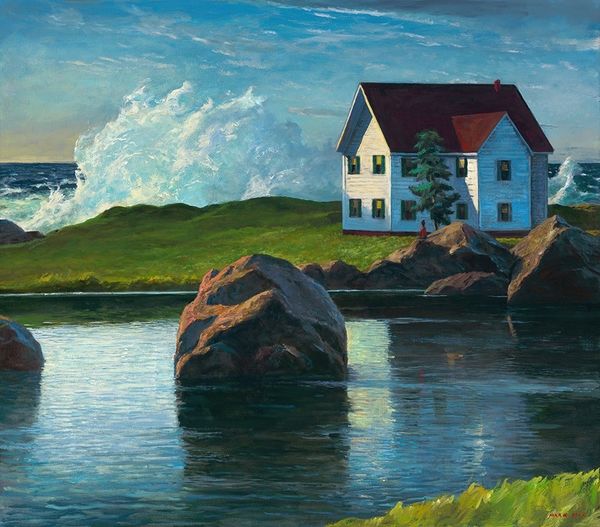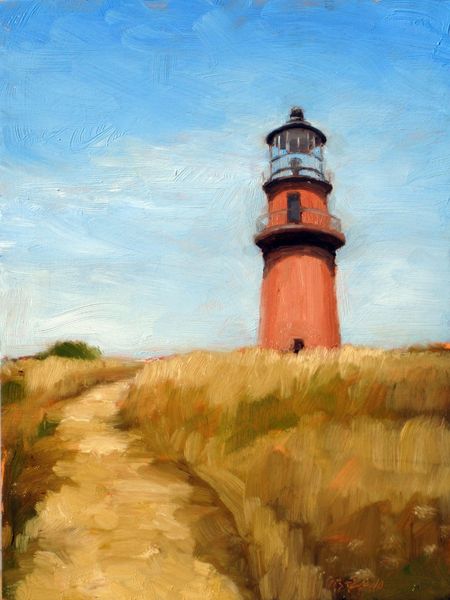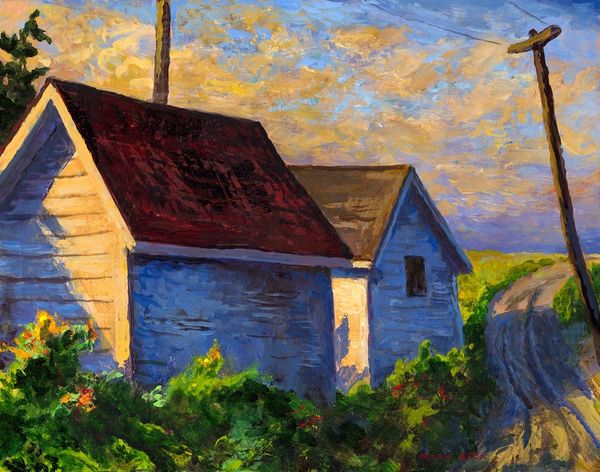
painting, oil-paint
#
painting
#
oil-paint
#
landscape
#
oil painting
#
cityscape
#
modernism
#
regionalism
#
realism
#
building
Dimensions: 109.9 x 74.9 cm
Copyright: Edward Hopper,Fair Use
Curator: Standing before us is Edward Hopper’s “Lighthouse at Two Lights,” painted in 1929. Editor: There’s such an imposing stillness to it. The sky seems vast, but the buildings feel grounded and solid, almost austere. It's not a comforting stillness, but one charged with some sort of quiet intensity. Curator: Indeed. Let’s consider Hopper's characteristic approach to form. Note how he’s rendered these buildings with a focus on geometry, emphasizing the lighthouse's cylindrical shape against the cubic forms of the adjacent buildings. What's intriguing is Hopper's Regionalist leanings – depicting American scenes with a clear gaze. It showcases his technical skills with oil paint. Editor: Hopper does present a carefully constructed commentary on the American experience. In this case, it brings forward ideas of isolation and alienation but on this foundation built from maritime infrastructure, where workers must constantly adapt to their surrounding conditions and changing climates, even as a society. The social context, that of America moving toward a devastating depression, colors the experience, does it not? A warning or signal on the hill and to all those who occupy and benefit from its labor and function? Curator: Absolutely, and considering the time frame, it reflects both the promise and the looming anxieties of a nation on the cusp of significant social and economic change. Hopper's art always acknowledges both the light and the looming darkness. This speaks, undoubtedly, to both the literal luminosity captured in oil, and to the darker aspects of this critical historic period. Editor: I like how you said that – “both light and darkness”. When viewed with consideration for the landscape the painting’s composition speaks of not only to an understanding of architecture, but labor that keeps society functioning through the guidance of the light and navigation that provides stability to maritime laborers through the looming darkness. Curator: Looking at the materials chosen— the textures achievable with oil, its capacity for capturing natural light and shadow. Everything serves that deeper reading, down to the artist's labor itself. Editor: Yes. And in seeing this dialectic that underscores a social struggle present even within serene-seeming American landscapes, the dialogue between labor and leisure is further expanded through Hopper's application of architectural knowledge, so that our experience as a public can continue, both individually and with each other. Curator: Reflecting on Hopper’s composition, there’s something enduring here—it feels very… American. Editor: Indeed, a signal to the eye that continues its purpose as guidance today and continues its commentary as long as we're viewing it and conversing within its themes.
Comments
No comments
Be the first to comment and join the conversation on the ultimate creative platform.


